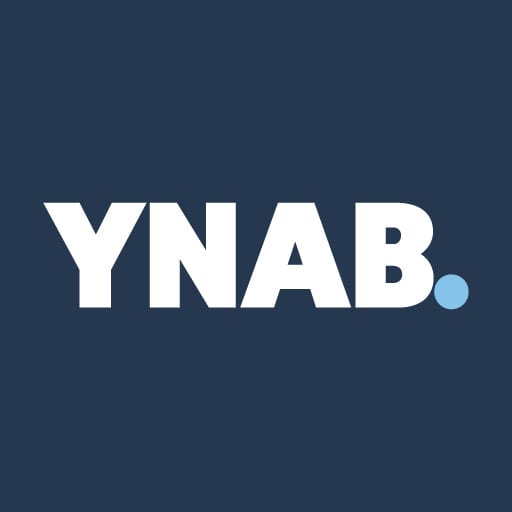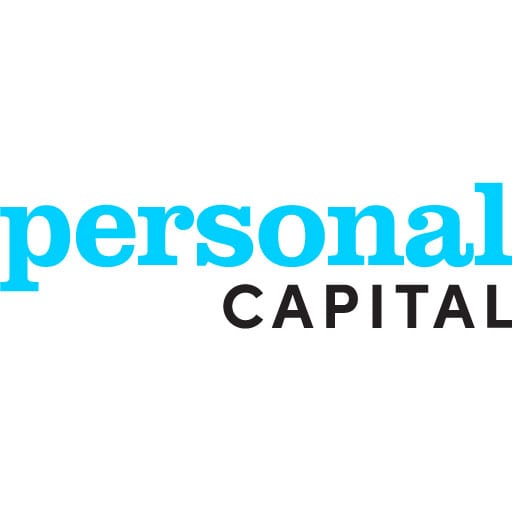Effective January 1st, 2024, Mint was shut down and integrated into Credit Karma. Mint users can still access several of the platform’s financial tools with a free Credit Karma account, but Mint is no longer be available.
Mint and YNAB are two of the world’s most popular online budgeting apps. You can use both services to track your spending, savings, and debt amounts, among other things. Both companies also offer easy-to-use apps that keep you informed of your finances wherever life takes you.
If you’re looking to use a budgeting app to get a better handle on your finances, you might be wondering whether Mint or YNAB meets your needs more effectively. After all, it would be counterproductive to sign up for both services; the entire purpose of an online budgeting tool is to reduce the number of accounts you have to log in to.
To make your decision-making process easier, I’ve put together a post that provides an overview of both Mint and YNAB, the pros and cons of using each service, and other interesting details you might be interested in. Keep reading to learn more about where each product shines and also where they fall short.
Let’s jump right in and start with the basics.
What is YNAB?
YNAB stands for “You Need a Budget.” The company was founded in 2004 by a husband-and-wife team Julie and Jesse.
YNAB is a small, privately held company that offers personal budgeting software. They also offer educational resources that help you get a better handle on how you’re spending money so you can identify areas where you can save. To be clear, YNAB is all about helping you save money and budget better.
What is Mint?
Mint is a financial tracking app and budgeting tool. Mint was initially founded in 2007 and quickly grew its user base to over 2 million subscribers.
In 2009, Intuit acquired Mint for $170 million. The company now has over 20 million users and is widely recognized as the most popular budgeting app.
How Does YNAB Work?
YNAB offers personalized budgeting software that can be accessed through an online account or via mobile apps. When it comes to educating you about being fiscally responsible, YNAB takes things one step further.
The strategy behind YNAB’s saving and spending principles can be summarized by their Four Simple Rules for Successful Budgeting, which are as follows:
#1. Give Every Dollar a Job
#2. Embrace Your True Expenses
#3. Roll with The Punches
#4. Age Your Money
Each interaction you make with your YNAB account will, in one way or another, tie back to the rules listed above. If you’d like to learn more, here’s a quick video that gives an overview of the four rules.
You Need a Budget App
YNAB is most commonly accessed via its powerful apps, which are highly rated, with a near-perfect 4.8 stars (out of 5) in the App Store. (This is one of the highest app ratings I have seen to date!) Android users can download YNAB in the Google Play Store, where the app has a 4.1-star rating (out of 5). You can even integrate YNAB with your Amazon Echo device.
YNAB Features
Here are the main features that YNAB offers:
- Free Online Workshops are available to YNAB customers that teach you how to manage your money better.
- Budget Together is a feature that makes it easy to share your finances and spending habits with your partner.
- Goal Tracking is a tool within the YNAB app that helps you set budgeting goals and stick to them.
- Reports in the form of charts and graphs can help you gain a holistic view of your finances.
- Customer Support is available through a very advanced and user-friendly self-help platform. You can also contact YNAB via email at [email protected].
How Does Mint Work?
Mint’s spending and budgeting tools are available through an online account.
As an account holder, Mint will help you link all of your external financial accounts to your centralized Mint dashboard. Mint will then automatically populate this data into your account so you can have a full understanding of your financial picture—all in one place.
Mint Features
Here are some of the additional features that Mint offers:
- Bill Tracker is a tool that ensures you always pay your bills on time. With Bill Tracker, you can easily schedule bill payment due dates in the app. You’ll then be alerted before each due date so you won’t be blindsided by any payments. Once the bill is paid, you can mark it as complete and move on with your life. Simple!
- Daily Budget Planner is a spending analyzer that monitors your daily spending. This tool helps you see where your money is going by grouping your various purchases into categories—like restaurants, auto expenses, and utilities, for example.
- Credit Score Monitoring is a tool that does just what it says: monitors your credit score. As a Mint account holder, you’ll have real-time access to your credit score. The downside is that Mint offers only one credit bureau’s score for free. If you want to have access to your score across all three credit bureaus, you’ll have to upgrade to Mint’s Credit Monitoring service, which costs $16.99 each month.
- Portfolio and Investment Tracking is an interesting feature that helps you monitor your investment accounts from your Mint account. This tool also will monitor any investment fees that you might be paying and help give you an understanding of how your portfolio is allocated.
- Mint Alerts can keep you informed of a variety of situations. For example, you can set alerts that automatically notify you if you’ve been hit with an ATM fee or late charge, if your account balances are running low, or even if you’ve spent an obscene amount this month at restaurants.
Now that we’ve covered the main features that Mint offers, let’s take a look at YNAB.
Mint vs. YNAB: What’s The Difference?
While Mint and YNAB have a lot in common, the two companies stand out from each other in a number of ways.
YNAB is More Protective of Your Data
One thing I really like about YNAB is that the company is focused on one thing and one thing alone: helping you save money and get a handle on your finances. They don’t share or sell your data or try to upsell you on other services. You actually have to opt-in to allow YNAB to access your budgeting data, whereas Mint accesses everything by default.
On the other hand, Mint is owned by a billion-dollar company, Intuit, so it’s not surprising that they will try to monetize you with “special offers.”
YNAB Costs Money – Mint Doesn’t (but there’s a catch)
If you want to be a YNAB subscriber, you’ll have to chalk up $11.99 each month (or $84 annually). Mint, on the other hand, is a 100% free budgeting software. But as the saying goes, if something is free, you are probably the product.
As a YNAB customer, at least you’ll know how the company makes money. As a Mint customer, you can expect to receive a steady trickle of email ads for all sorts of financial products, including credit cards, loans, and mortgages. Mint also sells anonymized customer data to third parties.
These third parties then use your data to target you with ads that might fit your situation. For example, if you’re in debt, you might start to see offers for debt consolidation. If you’re searching for a new car, expect to see more ads about cars and auto loans.
Mint Offers More Services Than YNAB
As you might expect from a service that’s run by a billion-dollar company, Mint offers more services and features than YNAB does. For example, you can monitor your credit score for free with your Mint account—something you can’t do with a YNAB account. Mint also accepts a higher number of external account integrations than YNAB, so you can get an even more complete view of your financial health.
Promotions, Bonuses & Coupons
At the time of this writing, YNAB is offering a 34-day free trial to new customers. Since Mint is already free, there are no promotions available.
Security Features
YNAB and Mint both offer very secure mobile apps and web platforms. I have trusted my data with both companies and would do so again.
You can learn more about Mint’s security features here. For a more in-depth overview of YNAB’s security features, check this out.
Customer Service and Support
Both Mint and YNAB offer helpful self-service customer support platforms. I would say that YNAB’s platform is a little easier to use and understand.
If you need help from a real person, Mint offers live-chat support seven days a week from 5 a.m. until 9 p.m. Pacific Time. YNAB offers email support (scroll to the bottom of that page to find the email contact link). I would say that both companies, more or less, tie when it comes to the customer support category.
Alternatives to Mint and YNAB
Here are some of the more popular alternatives to Mint and YNAB.
- Personal Capital
- Tiller
- MoneyDance
- EveryDollar
- Wally
- PocketSmith
Before signing up with any service, do your due diligence and research your options to see which makes the most sense for your specific situation.
FAQ
How Much does YNAB Cost Per Month?
YNAB costs $11.99 each month or $84 annually. If you decide to pay for the service annually, it works out to $7/month, which is a much better deal.
Is YNAB Worth the Cost?
Yes. I would say that YNAB is probably worth the cost for most people. If you are serious about keeping track of your budgeting and finances, it’s probably worth paying the small monthly fee.
How Much Does it Cost to Use Mint?
Mint is 100% free to use. Unless you opt for Mint’s Credit Monitoring service, you won’t be charged any fees to use Mint.
What is the Difference Between Quicken and Mint?
Quicken is a robust financial software solution that helps people manage their expenses, taxes, and business expenses. Mint is a personal budgeting and financial tracking service. Quicken costs money, and Mint is free. Both are owned by the same company: Intuit.
Mint vs. YNAB: Which One is Better For Me?
Since you’ve made it this far, it should be clear Mint and YNAB offer slightly different services. So the question of which service is better depends on your unique situation.
If you’re looking for a free app that can gather all your financial data in one place while monitoring your credit score and net worth, Mint is an easy choice to make. You don’t even need to pull out a credit card to sign up. It’s one less thing to worry about.
On the other hand, if your primary focus is budgeting—and if you’re really serious about setting and making a budget—YNAB is probably the service you’ll want to use. There’s a nominal monthly fee, to be sure. But you should be able to compensate for that by saving and spending more responsibly.
If you’re not sold on either of these, check out our post on the 21 best personal finance software available to find one that might suit you better!
Ready to learn more about saving money and starting your journey on the path that leads to financial independence? Check out my post on 51 money-saving tips.







No comments yet. Add your own